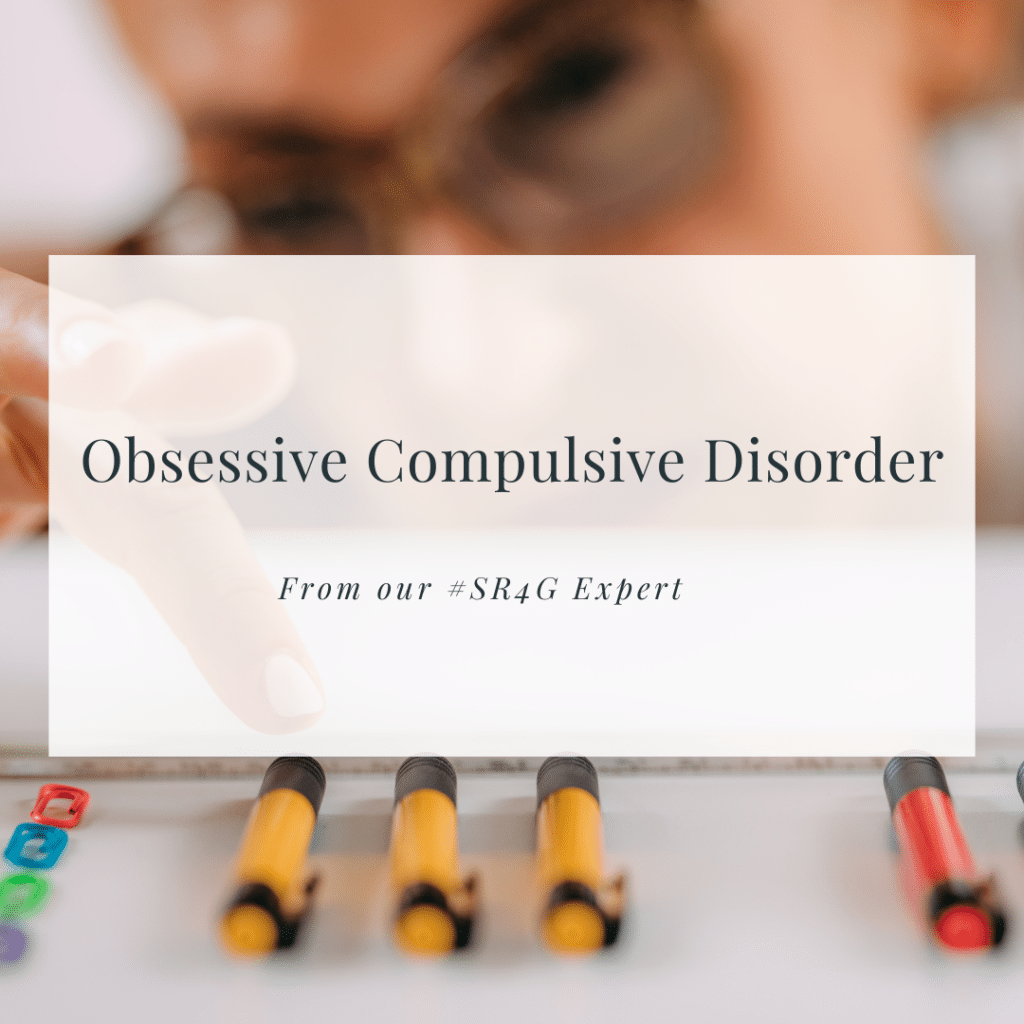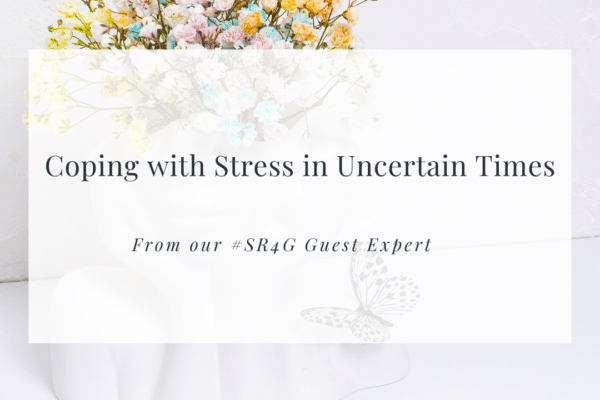
Obsessive Compulsive Disorder, or OCD, is a commonly misunderstood mental health disorder. You may have heard the phrase “I’m a little OCD” used as a way to describe someone who likes things to be a certain way, done in a certain order, or who is organized and cleanly. While phrases like this are not typically used with malice, these phrases spread misinformation about a serious, sometimes debilitating, mental health disorder and minimize the lived experience of those diagnosed with OCD.
OCD in reality is thought of as the doubting disease. Individuals with OCD experience chronic doubts, or questions, about reality that provoke fears about things that are not actually happening in reality (for example, ‘what if I didn’t lock the door and someone breaks into my home and kills my family?’). This results in distress and compulsive and/or avoidance behaviors that are aimed at decreasing distress and/or preventing a feared, terrible possibility from happening. People with OCD often feel as though they cannot trust their senses or their true selves, which can make life extremely difficult and confusing. Because of this distrust of the senses/self, individuals with OCD confuse imagined, irrelevant possibilities for reality.
OCD has two main diagnostic criteria; the presence of obsessive thoughts (or doubts) and the presence of compulsive behaviors. Obsessive thoughts are recurring and persistent thoughts, images, or urges that are unwanted, intrusive, and ego-dystonic in nature; meaning these thoughts are out of line with the individual’s self-concept and beliefs. Obsessive thoughts cause distress, including emotions such as excessive anxiety, disgust, guilt, shame, and dread. Obsessive thoughts prompt compulsive behaviors, which are defined as either overt behaviors or mental acts that individuals feel they must do to either prevent a feared outcome from happening and/or to decrease the distress caused by obsessive thoughts. Some compulsive behaviors are not connected to the obsessive thoughts in any realistic way, which many individuals with OCD recognize, yet individuals still feel compelled to do the behaviors anyways. Compulsive behaviors are excessive and often repetitive. Obsessive thoughts and compulsive behaviors must take up an hour or more per day, cause clinically significant distress, and cause functional impairment (difficulty with work/school, socializing, activities of daily living, etc).
Any content that fits the definitions above can become obsessive, and there are many subtypes or themes of OCD that are commonly seen. Keep in mind, all of these themes are experienced as intrusive and unwanted so none of these thoughts or behaviors reflect who the individual suffering from OCD truly is. Below are some examples:
- Harm OCD: intrusive unwanted thoughts, images, or urges about harming the self or others intentionally, accidentally, and/or due to not being careful enough
- Please note: intrusive, unwanted, obsessive thoughts about suicide/self-harm differ from suicidal ideation/self-injurious behaviors that are common in other mental health disorders such as depression. Obsessive, intrusive thoughts about harming others also differ from ego-syntonic homicidal ideation. Seek help from a mental health professional if you or a loved one are experiencing any of these thoughts, whether they are experienced as intrusive or not.
- Contamination OCD: intrusive, unwanted thoughts, images, or urges about germs, bodily fluids, household cleansers, emotional contamination, and/or having/getting a disease (cancer, STDs, dementia, schizophrenia, etc)
- Sexual intrusive thoughts/doubts about sexual orientation and/or gender identity
- Please note: all sexual obsessions in OCD are unwanted and cause distress. This differs from those who are questioning their sexual orientation and/or gender identity to find what is most in line with their true self.
- Sexual intrusive thoughts of taboo nature, including obsessive doubts and fears about being a pedophile, being attracted to family members, being attracted to animals, having unknowingly committed a sexual crime, etc
- Please note: these obsessive, intrusive, unwanted thoughts differ from individuals who have ego-syntonic or wanted thoughts about children, incest, or rape. This is an important distinction because individuals with OCD often experience excessive amounts of guilt and shame despite not wanting to have these thoughts. Individuals with OCD are not dangerous, yet will often take excessive, unnecessary measures to be sure they are not.
- “Just right” OCD: intrusive doubts about doing things “not just right.” This sometimes includes magical thinking, or fears that something bad will happen if things are not done “just right”
- Religious or moral scrupulosity: obsessive doubts about being a morally bad person, practicing a religion incorrectly/imperfectly, offending religious figures, etc
- Relationship OCD: excessive obsessive doubts about healthy, happy relationships and/or excessive doubts about offending others
- Existential OCD: obsessive thoughts of death, the afterlife, or the meaning of life
- Hyperawareness or sensorimotor OCD: obsessive thoughts about automatic bodily functions such as breathing, blinking, thinking, swallowing
- Perinatal/postpartum OCD: intrusive unwanted thoughts and fears of harming baby
- Please note: this can impact individuals of any gender and, again, these thoughts are unwanted and not an indication of being a “bad” or dangerous parent
- False memory or real event OCD: excessive, obsessive doubts about real events that happened in the past which can include questioning if something was “bad” or wrong, was not remembered correctly, or could have caused something terrible to happen
- Superstitious OCD: obsessive intrusive thoughts about superstitions being true/real
- Meta OCD/”Backdoor Spike”: obsessive doubts about even having OCD after being diagnosed, and/or obsessive doubts about treatment/therapy
- And more
Common compulsive behaviors seen in individuals with OCD include excessive checking, redoing, cleaning, washing, researching, praying, reassurance-seeking, and avoidance behaviors. It’s important to note that compulsive behaviors are not always visible, overt behaviors. Mental compulsions, which are often even more common than physical compulsions, can include mentally reviewing or replaying memories/events, ruminating or trying to figure out an imaginary problem, neutralizing thoughts or replacing an intrusive “bad” thought with a “good” thought, mental counting, and/or mentally checking body sensations or emotions. Anything that is done to prevent a feared possibility from happening and/or to get rid of the distress caused by obsessive thoughts can be compulsive.
OCD is a treatable mental health disorder. Typically individuals with OCD will require medication and/or specialized evidence-based therapies for OCD. First line medications for OCD typically include SSRIs, or Selective Serotonin Reuptake Inhibitors. There are two specialized forms of Cognitive Behavior Therapy (CBT) available for individuals with OCD; Exposure and Response Prevention (ERP) and Inference-Based CBT (ICBT). More information on ERP can be found here: https://iocdf.org/about-ocd/treatment/. More information on ICBT can be found here: https://icbt.online/what-is-icbt/. It’s important that individuals with OCD seek specialized care, as general talk therapy can make OCD worse. For individuals with severe OCD symptoms, intensive outpatient, partial hospitalization, and/or residential treatment may be necessary.
If you or a loved one are in need of emergency/crisis support, call 988 to be connected to a crisis line, call 911 to be transported to a hospital, or go straight to your nearest emergency room department. You can also text “HELP” to 741741 or call the National Suicide Hotline number at 1-800-273-8255. Walk-In Counseling Center in Minneapolis and Walk-In Crisis Services at Urgent Care in St. Paul both offer free walk-in therapy services.
References:
American Psychiatric Association. (2022). Diagnostic and statistical manual of mental disorders (5th ed., text rev.). https://doi.org/10.1176/appi.books.9780890425787
International OCD Foundation (n.d.). About OCD. https://iocdf.org/about-ocd/
International OCD Foundation (2013, September 23). “I’m soooo OCD” + other common myths about obsessive compulsive disorder. https://iocdf.org/wp-content/uploads/2014/10/OCDMyth-Handout-092313.pdf
O’Conner, K. & Aardema, F. (2012). Clinician’s handbook for obsessive compulsive disorder: Inference-based therapy. Wiley Blackwell.
Disclaimer: This newsletter is a brief synopsis of information about OCD that is intended for informational purposes in order to spread awareness, decrease shame, and increase hope for those impacted by OCD. This newsletter may not apply to every individual in every context. Every individual is unique and newsletters cannot speak to all of the nuances and complexities of human nature. This information is not intended to replace therapy or recommendations from healthcare providers. Seek an assessment from a trusted mental health professional for recommendations specific to your needs.

